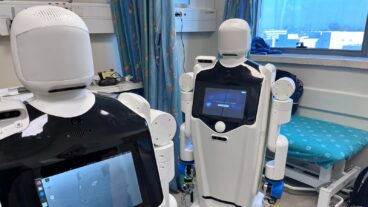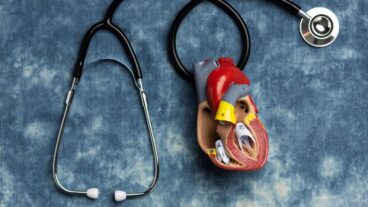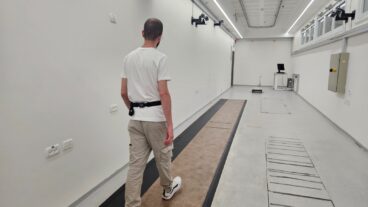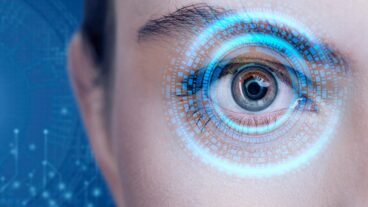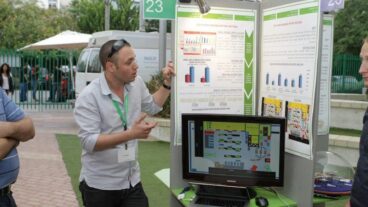The Watch Pat 100 indicates a decrease in blood flow in the peripheral arteries during REM sleep.More heart attacks occur during the early morning hours than at other times. At the same time, most Rapid Eye Movement (REM) or dream sleep also occurs in the early morning hours. Researchers have long suspected a connection between the two – but now an Israeli company has taken steps to harness the sleep signals to work to prevent heart attacks.
A new FDA-approved device developed at the Technion-Israel Institute of Technology and at Itamar Medical Ltd., an Israeli technology company, easily and reliably identifies the onset and duration of REM sleep by tracking changes in the blood flow through the finger.
This could have strong implications for prevention of heart attacks and other cardiac events by identifying physiological changes unique to this stage of sleep that may signal cardiac stress.
The device, called Watch Pat 100, was presented at the annual meeting of the Associated Professional Sleep Societies in Chicago, last week. The meeting – attended by more than 6,000 sleep researchers – marked 50th anniversary of the discovery of REM sleep.
Rather than relying on traditional methods – rapid eye movement, EEG and EMG – of detecting REM sleep, Watch Pat 100 reads the peripheral arterial tone (PAT), which relates to the state of dilation or constriction of the peripheral blood vessels. It shows a decrease in blood flow in the peripheral arteries during REM sleep.
“Increased resistance to blood flow in the periphery during REM sleep suggests that REM sleep can be used as a stress test for the heart,” said principal investigator Professor Peretz Lavie of the Technion Faculty of Medicine, head of the Technion Sleep Laboratory, and a member of Itamar Medical’s Board of Directors. “This monitor could do for heart disease what the home blood pressure monitor has done for stroke prevention.”
Information about the proportion of REM sleep and its timing during the night is also very important for the assessment of sleep quality and diagnosis of sleep disturbances. Also, “people may be able to track their dreams and wake up at the right moment to remember them,” Lavie added. The sleep expert presented a lecture at the conference on sleep apnea as a major risk factor for hypertension.
A significant benefit of Watch PAT 100 – worn on the wrist and using probes that slip over two fingers – is that it is non-invasive and can be easily used at home. The signals are stored in a removable memory card in the device, which can then be downloaded to a computer for analysis. This eliminates the need to spend an expensive night in a sleep clinic hooked to multi-lead monitoring channels that register eye movements, muscle tone, and brain waves.
According to Itamar Medical, the Watch-PAT 100 has already proved to be a valuable tool for physicians diagnosing and treating sleep apnea.
Sleep apnea is a condition where people stop breathing for short periods during sleep. Many people suffer about 10 sleep apnea episodes an hour without any negative results. Only once the episodes increase to over 15 an hour do doctors actually diagnose it as a problem. In extreme cases a patient can suffer from 500 sleep apnea episodes a night – 60 to 70 an hour.
While sleep apnea is not a life-threatening condition because the body’s sympathetic nervous system wakes a person to ensure he continues breathing, the condition causes snoring, fatigue, and in some cases impotence. In 70% of cases it is also an indication of more serious heart problems.
In the US, 18 to 20 million people are thought to suffer from this condition, making it as widespread as asthma. Despite this, only 10% of these patients are diagnosed, because current testing is intrusive, uncomfortable, and time-consuming. Patients have to attend a sleep laboratory at a hospital for one or two nights. Electrodes are hooked up all over their bodies and they are monitored throughout the night. About 1.5-5 million sleep tests are carried out a year in the US, and some 75-80% of patients who undergo the test are diagnosed with sleep apnea.
In the study, conducted in Israel and Sweden, conventional laboratory sleep recordings were obtained simultaneously with PAT signals in 156 patients. Then REM sleep was identified both by the conventional scoring based on eye movements, brain waves and muscle tone, and by the automatic algorithm of the Watch Pat100. The correlation between the two methods was excellent, with the automatic algorithm identifying 3.40±0.88 REM periods per subject as compared to a manual scoring of 3.64±0.98. The proportion of REM sleep was overestimated by only 4% by the automatic analysis.
While the technology in the Watch PAT100 has been in use in medicine for almost a century, it could not until now be used to accurately measure PAT, nor could the signal be measured non invasively by any other means.
Two novel features of the Watch PAT 100 are the unique multi-cell construction that prevents accumulation of venous blood in the fingertip, and advanced digital signal processing algorithms to interpret the PAT signal.
Watch-PAT 100 is being marketed in the U.S. by Respironics of Murrysville, Penn., the largest sleep-medicine company in the United States. According to Lavie, the instrument is already catching on with U.S. sleep professionals.
“We’ve already sold dozens to clinics specializing in sleep apnea, and to home consumers. Just yesterday, I was contacted by an American tourist here in Tel Aviv, who felt he was suffocating in his sleep. We sent him the Watch PAT-100 to use in his room, the diagnosis is automatically given, and the proper treatment can be provided,” Lavie told ISRAEL21c.
Lavie said that treatment can vary depending on the severity of the apnea, ranging from a CPAP mask which pushes pressurized air into the airwaves, to upper airway surgery, to a dental retainer which opens a breathing passage.




